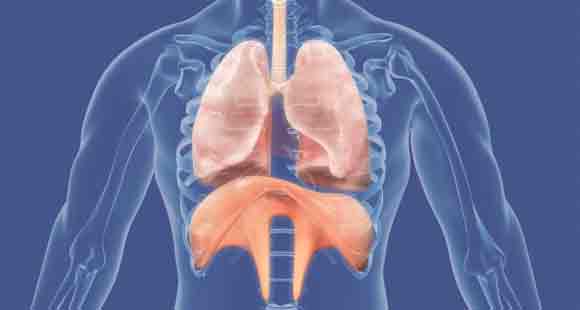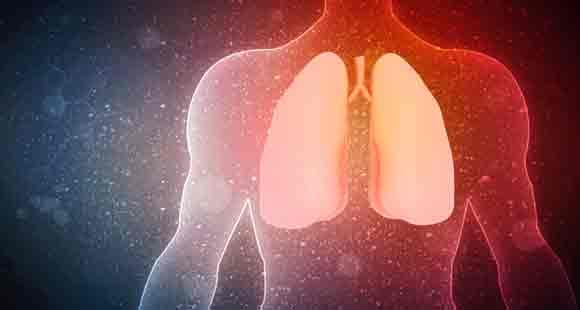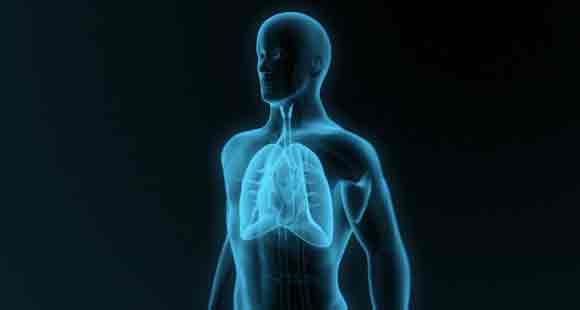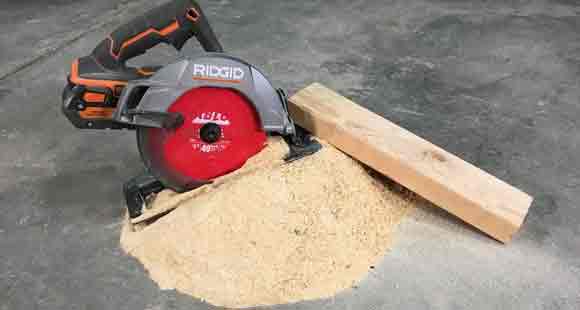How to Get Sawdust Out Of Lungs: 5 Steps DIY Techniques
It's a common misconception that wood dust is only an issue for people who work with wood all day.
Sawdust particles are very small and light so they float into the lungs with ease. And because these particles are often dry, they don't set off any of the body's natural defenses.
If wood particles are present in the air you breathe, they may end up settling in your throat or nose without you noticing.
Many people are unaware that sawdust can sometimes enter the lungs unintentionally by breathing it in or swallowing it and this can lead to serious complications.
Sawdust, What is it?

Sawdust is wood that has been processed into wood chips. Sawing wood can produce wood dust, which is often referred to as wood shavings or wood chips.
Wood dust consists of tiny particles of wood that vary in size depending on how the wood was cut and what method was used to create it.
The number of small wood particles in wood dust is called wood dust exposure.
How wood is cut or created can change the number of wood particles that are present in wood dust. Smaller wood particles usually create wood dust with a lower dust occupational exposure than larger wood chunks or logs.
Here Are Some Ways to Get The Sawdust Out of Your Lungs?
Step 01: Drink Plenty of Fluids.
It is recommended that woodworkers drink water or a sports drink to help flush wood dust particles from their system.
If woodworkers have been exposed to wood dust for long periods of time, they should try drinking at least two quarts of fluid per day.
Woodworkers should make sure they stay hydrated and drink plenty of fluids to help flush wood dust particles from their system.
It is usually recommended to drink at least 16 ounces of water or other fluid for every pound of wood dust particles that you inhaled.
This can help remove wood dust from your lungs and make it easier to breathe once the construction dust has left the body entirely.
Step 02: Refrain from any Strenuous Activity
Intense physical activity, such as running and strenuous weight lifting, should usually be avoided for at least a week after dust exposure to avoid aggravating the problem.
This is because wood dust particles that have not left the body yet could become airborne during exertion and re-enter the lungs, causing a greater risk of developing lung function complications.
Step 03: Food That's Good For You
If possible, eat foods that help lung health (e.g., oatmeal, beets, carrots). Foods that are rich in antioxidants have been linked to lung health.
Step 04: Relax in a Steam Room
A hot shower or bath followed by a steam room session may help lung problems caused by wood silica dust exposure.
During the sessions, it's important to breathe deeply and steadily through your nose to inhale as much moisture as possible. Exhaling through your mouth will not allow you to absorb as much of the humid air.
After lung complications, the fluid left behind in the lungs will begin to dry out, making it hard for air to pass through. This can cause lung tissues to break down and develop lung infections.
Inhaling steam helps loosen up this gunk so that your lung tissues will not have as much trouble breathing properly again.
Step 05: Consult a Doctor If Symptoms Persist or Worsen
Get a lung x-ray at the doctor's office. This will tell you if there are any particles left in your lung from the cumulative exposure.
Explain to your doctor what happened, so that they have as much information as possible about your lung injury or occupational asthma.
While lung cancer is unlikely, it is always best to know for sure and follow up on every possibility for cancer.
How Does Bay Sawdust Cause Lung Infections for People?

There are a number of ways for this to happen. One of the most common ways is when sawdust accidentally enters the lung via breathing in or swallowing it, which can be accidental or deliberately done in some cases.
Bay sawdust has been known for causing lung infections both intentionally and unintentionally. Most women who work in a kitchen will know the dangers of lung-related accidents firsthand, referring to it as sawdust lung.
This happens by accidentally or purposely breathing in the fine dust, which enters your lungs and can eventually lead to an infection that causes respiratory diseases.
One should steer clear from any activities where breathing is necessary after exposure to sawdust until they see a doctor or other medical professional for advice.
The Symptoms of A Sawdust Lung Infection
If you have symptoms of lung disease caused by exposure to sawdust, it's best to refrain from strenuous activities that could lead these problems to worsen. Instead, you should be resting and should take some time off from work if possible.
Difficulty Breathing While Lying Down
Sawdust is a lung irritant, and people who are exposed to it may experience lung inflammation, difficulty breathing while lying down, and increased frequency in lung-related illnesses.
Chest Pain
Chest pain caused by lung cancer can indicate a lung tumor or lung infection.
Dry Cough
You could also experience lung irritation which is characterized by a dry cough or wheezing. If you develop a dry cough, it means that the lung tissue has reacted negatively to the sawdust particles and are trying their best to expel them from your body.
Rapid Heartbeat
Rapid heartbeats, also known as tachycardia or palpitations, are an indicator of lung irritation that can be caused by sawdust. Lung irritation is characterized by a rapid heartbeat, breathing difficulties, and anxiety.
If you're experiencing these symptoms while also having cancer or lung infections, it's best to speak with your physician to find out what they recommend for treatment.
How to Prevent Sawdust From Entering The Lungs?

There are many ways that people can prevent sawdust from entering the lungs. People can take measures to keep the dust from getting into the lungs.
One such measure is to use a dust mask when breathing in. Another measure is to wear a breathing filter that will filter out the particles or liquid.
People could also try to use their nose and mouth instead of the lung to breathe air. It's important for people to be careful not to eat anything made of sawdust because it may enter the lungs by swallowing.
However, exposure to sawdust cannot be eliminated. Airborne dust we breathe and food that is edible or for consumption. It is inevitable for people to be exposed to sawdust.
In fact, lung cancer patients are commonly diagnosed with lung cancer due to inhaling lung cancer-inducing chemicals in comparison to lung cancers caused by other exposures.
Other Medical Treatments of Lung Disease
There are various treatment options for lung disease caused by exposure to sawdust. One option is surgical lung surgery and pulmonary rehabilitation.
This is a major treatment that may result in complications, but it may be the only definitive solution available for patients with lung cancers caused by exposure to sawdust.
Surgery of the lung and pulmonary rehabilitation are the two major treatments that may have risks such as subsequent complications, but these treatments may be the only definitive lung cancer treatment for lung disease caused by lung exposure to sawdust.
Lung surgery and pulmonary rehabilitation are designed to remove irritant particles from your lungs and help you breathe more easily and without pain.
Lung surgical procedures include lung resection, pneumonectomy, lung lobectomy, tracheotomy, and thoracoscopy.
Additional Guidelines After Working with Sawdust
When working with sawdust, be sure to wash your hands after handling any. If you have a dust-proof mask on, be sure to also clean that mask before using it again. When the sawdust gets on your skin, be sure to wash it off as soon as possible.
If any sawdust gets in your mouth, spit it out. Do not swallow it as this can cause aspiration into the lungs.
When heating up sawdust for use with a wood-burning stove and you are close to oxygen equipment or other things that run on-air, be sure to put the fire extinguisher on hand just in case of an accident.
When you use any of your tools, be sure to put the blade guard back on to make sure that no sawdust gets into the air or into your lungs unintentionally.
An assortment of different power tools can produce a lot of sawdust, so try something else if this is too much dust for you.
For example, an electric sander can produce less sawdust than a circular saw. When you are done with your project, be sure to dispose of the sawdust properly so that it does not pollute the planet or end up in soil that will cause environmental damage.
Frequently Asked Questions
01. What You Can Do to Understand That You are Affected?
If you are unable to get enough oxygen, it can be a sign that you are suffering from lung cancer. This is usually the result of lung exposure to lung hypersensitivity pneumonitis.
It is difficult for lung cancer patients to know they are affected due to the lack of specific symptoms. A lung cancer diagnosis may be delayed if only symptoms of lung hypersensitivity or infection-related lung diseases are present.
02. How to Protect Yourself from Breathing in Sawdust Dust?
If you are working with sawdust, there are a few things that you can do to protect yourself from lung disease.
You should always wear a mask when you're in an area where there is lung hypersensitivity or a lung infection.
You should also avoid eating anything made of sawdust because it may enter your lungs by swallowing.
03. How do Dust Reactions Affect the Lungs?
If you've been exposed to sawdust, your body is hypersensitive to it. This hypersensitivity could produce an autoimmune response. To prevent this hypersensitivity, there are two ways that people can take it.
People can remove dust from their workplace or home by using a vacuum cleaner and washing the floor with water before they vacuum so that they do not bring dust back into the house.
They can also use a mask to help them not breathe in sawdust and remove it from work areas before working there.
04. Diseases Caused by Dusty Operations?
There are many diseases that can be caused by dusty operations. The most common symptoms of these diseases include:
If hypersensitivity or infection causes lung cancer in the lung, it could produce multiple pulmonary hypersensitivities such as hypersensitivity pneumonitis and hypersensitivity pneumonia.
Hypersensitivity pneumonitis is caused by the hypersensitivity to dust in the lungs. This hypersensitivity could produce an autoimmune response.
05. What is Protective Equipment for Wood Dust?
If you are exposed to high levels of sawdust, you should wear respiratory protection equipment.
Respiratory protection equipment is also protective equipment for wood dust. It can help prevent particles from entering your lungs.
Respiratory protection for wood dust-type respirators includes N95 respirator masks and P100 filters that can remove 99 percent of air particles larger than 10 microns.
Dust respirator is similar to a regular respirator, but it has extra filters to reduce the amount of dust that enters the mask.
06. How to Keep Wood Dust Away from the Body?
In order to keep wood dust away from the body, wear a long sleeve shirt and pants. This will protect you from getting any of the particles on your skin.
In the event that you do get sawdust in your mouth, be sure to spit out the saliva immediately and brush your teeth with a toothpaste that contains fluoride.
If this still doesn't help, you can try one of the following three solutions:
1) Drink milk- not cow's milk- since it is high in calcium;
2) Take an over-the-counter antihistamine for those who are jumpy or have allergies;
3) Use a humidifier to help trap air moisture so it can relieve dryness of the throat, nose, sinuses, and lungs. dentures.
07. How to Get Rid of Small Sawdust Piles Once They have Accumulated?

If there is just a little bit of sawdust, you can just use a broom to sweep it up and take it outside to throw in the trash.
If there is too much sawdust for the broom to handle, then gather all of your tools together and start vacuuming up the piles one at a time.
Conclusion
As you can see, the removal of sawdust from your lungs is not as simple as it may seem. You'll need to take a few different steps in order to get rid of this pesky problem for good. It's highly recommended to taking safety precautions when working with wood and wearing protective gear is essential.
